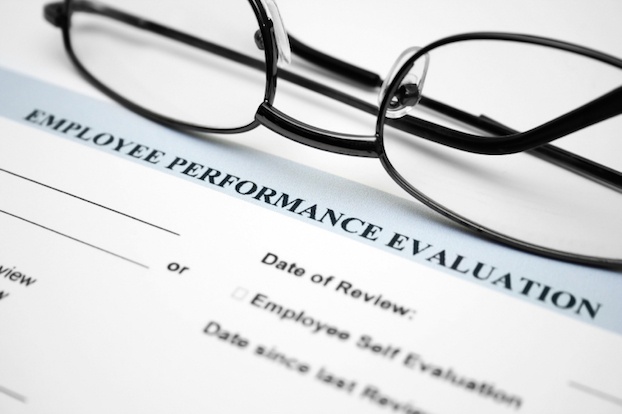As a business owner you know the success of your business is largely dependent on setting and achieving your corporate goals, and you know you can’t do it alone. Employee performance is inextricably intertwined with reaching your company’s goals, which is why effective performance management is critical to keep you moving in the direction you want to go.
Getting your employees to perform like an NFL starting lineup requires regular planning, collaboration, instructive coaching and steady streams of feedback. Used correctly, performance reviews marry expected employee benchmarks to a company’s greater goals.
Unfortunately, not all businesses employ a review process that supports good employee performance. If your performance reviews could be performing better, the following guide will provide you with some knowledge to align your what your company needs with how your workers perform:
Getting the Right Kind of Employee Performance Feedback, and Using It
Good performance management involves much more than conducting a single annual review for each employee: it’s an ongoing process that begins with setting expectations.
A clear and comprehensive job description is the foundation piece for measuring employee performance. Once employees know what is expected of them, regular feedback leading up to performance reviews ensures their efforts dovetail with a business’s benchmarks.
Consistency is key: Recently, Fortune reported that while 61 percent of employees said they would prefer receiving efficient, direct feedback, only 24 percent were receiving it; meanwhile, over half of CEOs believed their companies provided employees with such prompt assessments. This discrepancy may stem from the fact that while chief executives often provide regular feedback to their direct subordinates, they may incorrectly assume that such practices occur throughout their organizations.
RELATED: 5 HR Mistakes Small Businesses Make
Having regular conversations with employees about performance is critical to engaging and retaining them and gives employers insight into their level of job satisfaction. It also demonstrates corporate commitment toward developing employees to their potential.
Providing regular feedback between reviews provides advantages for employers, as well. It encourages employees to become proactive in addressing improvement opportunities; creates documentation that can be used to back important decisions; and provides advanced warning of potential problems, allowing employers to prepare contingency plans to preempt workflow problems that may arise from less-than-perfect employee performance.
Performance Planning and Employee-Manager Collaboration
In a performance review, managers and employees should craft well-written, comprehensive job descriptions that outline specific goals for the upcoming year, accounting for the ways in which employee goals are related to those of the organization and how day-to-day employee activities align with those objectives.
One popular method of setting goals is the “S.M.A.R.T.” method, by which any targets set must be:
-
- Specific.
-
- Measurable.
-
- Achievable/Attainable.
-
- Results-Oriented/Realistic/Relevant.
- Time Bound.
Clear verbal and written communication is critical to both parties’ understanding of expectations. Every goal must answer two questions: the “what” and “how.” The “what” component is the quality and quantity of work product expected from the employee; the “how” is the demonstrated behavior needed to achieve a stated goal.
Perhaps the most challenging aspect of a review is the establishment of the process by which an employee’s performance will be measured. Inconsistencies in performance evaluation criteria can lead to misunderstanding and mistrust, especially if a company uses a merit-based system to reward its employees.
Long-Term Results of Performance Reviews
Sitting down with employees once per quarter is ideal, but if that’s impossible then try meeting both four and eight months after their start dates so that no surprises arise during the annual review.
The actual review should take no longer than 30 minutes. In advance of the meeting, have employees complete a short self-evaluation that includes an update on their percentage of progression toward addressing any issues raised in previous reviews. Ask them to provide materials or statistics that support their claims.
Provide detailed information regarding any concerns. Take the time to inspect work product: The mere fact that “work is being done” is no guarantee of its having been done well. Knowledge of an employee’s work product and fair consideration of its quality will foster respect between those doing the managing and those being measured.
RELATED: Motivational Theory: When Employee Perks Don’t Work, Try Rewards and Recognition
Be direct and informative, avoiding vague concerns, while citing examples of good and poor performance. Recognize an employee’s positive work habits, detailing negative ones, and describe what improvement should look like. At the very least, try to cover the following topics:
-
- What the employee is doing well.
-
- Things the employee is not doing well.
-
- The timeline and metrics an employee must meet to demonstrate improvement.
-
- A skills-development plan that allows for individual training or specialized support.
-
- Strengths and challenges from the employee’s point of view.
-
- Requests that the employee would like to make of management.
- A brief recap of the meeting for future reference.
Providing an open forum for communication creates a positive path toward improved performance. Done properly, performance reviews foster collaboration and trust among employees at all levels of an organization.
If you found this article helpful, might we suggest:
-
- For more on keeping employees energized and engaged, read 10 Best Practices for Better Corporate Wellness.
-
- For more on managing young employees, read How Is Your Small Business Managing Managing Millennials?
- For more on keeping your employees over the long-term, read 7 Cost-Effective Ways Boston Businesses Can Increase Employee Retention.

